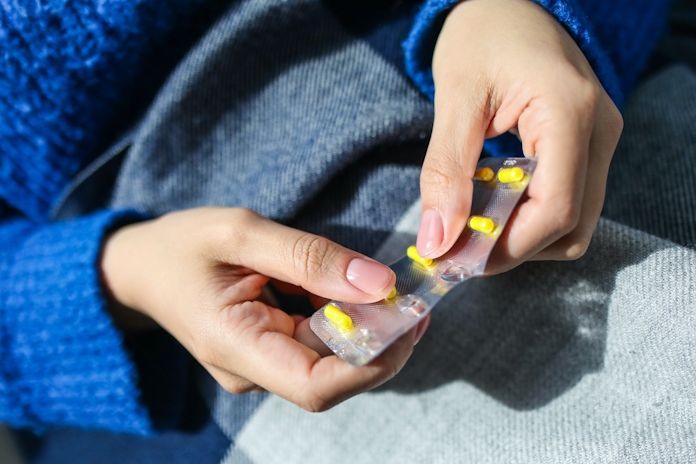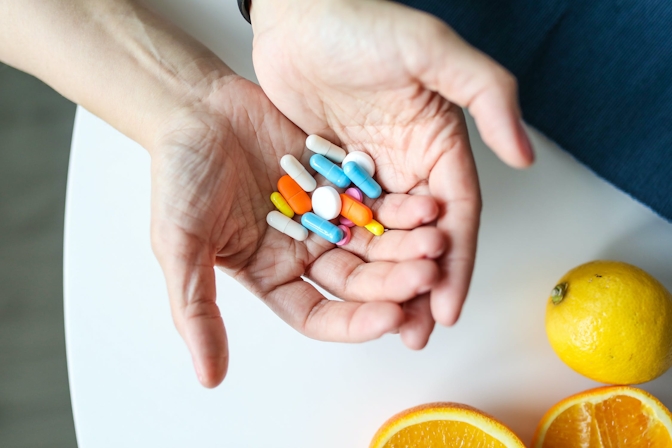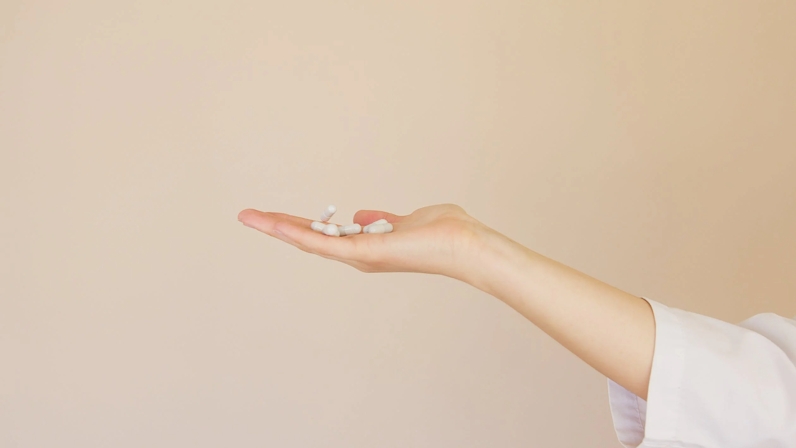
Photo by Polina Tankilevitch
9 Medications To Avoid Mixing With Marijuana
Do you take any of these nine types of prescription medications? If you’re feeling weird when you consume cannabis, this could be why.
Medical cannabis is becoming increasingly more popular around the world. But, while the herb is proving to be a useful medical tool, researchers still know fairly little about how cannabis may interact with various pharmaceutical medications.
In the upcoming years, this will certainly be a major area of study. In the meantime, here are nine prescription medications that you generally avoid mixing with weed (or at least talk to a professional about).
Medical Marijuana Card From MMJ.com
Of course, there are several situations in which you should use marijuana as a reprieve from difficult conditions. Cannabinoids are excellent therapeutical substances. That is why so many medical users grow marijuana at home. But, this is federally illegal unless you have a medical marijuana card.
Don’t worry. You can apply for or renew it easily with a proper medical marijuana card service. Have a look at MMJ.com.
They are a team of medical marijuana industry experts that will guide you in the whole process of getting the card so you can consume and grow marijuana legally for your well-being.
You can apply nationwide by following these simple four steps:
- Visit their website to schedule a virtual appointment with one of their licensed medical marijuana doctor. Don’t forget to register your account.
- Log in to your MMJ.com account and attend your appointment. The doctor will study if you can receive a medical marijuana recommendation so you can follow to the next step.
- Receive your medical marijuana card recommendation form and pay the state registration fee, which is typically 50 USD.
- Apply to the state registry and receive your brand-new medical marijuana card. And remember, the MMJ.com team will guide you in the whole process.
Visit the MMJ.com website and start the process of improving your life quality thanks to medical marijuana.
A Note About Drug Interactions
Navigating the landscape of cannabis interactions with prescription medications, such as lorazepam and marijuana or clonazepam and weed, can be intricate and multi-faceted. As we delve into this topic, it’s essential to remember that every individual’s biochemistry is unique, leading to potentially different reactions when substances interact with various bodies.
If you’re a seasoned cannabis user participating in daily use and suddenly halt consumption upon starting a new medication, you may experience withdrawal symptoms that affect your response to the new drug. Equally, the effects of mixing substances like Ativan (lorazepam) and weed can be remarkably
variable. One person may feel overly sedated after combining these, while another may not perceive any effects.
Our primary advice? If you’re introducing a new medication into your regimen and plan to consume cannabis, listen carefully to your body and maintain open communication with a healthcare professional.
In the following section, we will further examine the nine categories of prescription medications that you should generally avoid while consuming cannabis, or at the very least, have a detailed discussion with a healthcare professional before doing so.
Categories of drugs to avoid include:
- Propoxyphene
- Buprenorphine
- Levomethadyl Acetate
- Beta-blockers
- Benzodiazepines
- SSRIs
- SNRIs
- Antipsychotic medications
- Sodium Oxybate
Remember, combining substances such as Ativan and weed or lorazepam and weed can complicate your bodily interactions and responses. The information presented in this article is intended for educational purposes and you should always consult with a medical professional before testing out new drug interactions.
1. Drugs Containing Propoxyphene

Photo by Polina Tankilevitch
Back in 2010, the opioid painkiller propoxyphene was withdrawn from the U.S. market. The compound is known to be toxic to the heart, even in doses formerly considered therapeutic.
However, if you happen to have any leftover propoxyphene medications, it is best to not use them. It’s also unwise to mix them with cannabis.
Drugs that contain propoxyphene include:
- Balacet
- Darvon (Compound 32, Compound 65, N)
- Darvoset (N 100, A500, N 50)
- PC-Cap
- PP-Cap
- Propacet 100
- Propoxyphene Compound 65
- Trycet
- Wygesic
Symptoms to watch for:
- Oversedation
- Dizziness
- Confusion
- Difficulty concentrating
- Impaired judgement
- Impaired motor skills
- Impaired thinking
These symptoms may be worse in the elderly.
2. Drugs That Contain Buprenorphine
Ironically, buprenorphine is an opioid pain medication that is also used to treat opioid addiction. As an opioid, this drug is also thought to have a high potential for addiction.
In high doses, this drug can also cause respiratory distress, coma, and death. When combined with cannabis, the risk of these things increases, since both substances depress the central nervous system.
Both buprenorphine and cannabis are sedatives which means the chance of being overly sedated with this combination is high.
Common drugs that contain buprenorphine include:
- Butrans
- Belbuca
- Bunavail
- Buprenex
- Probuphine
- Suboxone
- Subutex
- Zubslov
Some symptoms to watch for include:
- Excessive sedation
- Respiratory problems
- Inability to stay awake
- Difficulty controlling motor function
- Slowed speech
- Inability to perform cognitive tasks
- Slowed or irregular heartbeat
If you have mixed buprenorphine and cannabis and are experiencing these symptoms, call for emergency help.
3. Drugs That Contain Levomethadyl Acetate

Photo by Artem Podrez
Levomethadyl acetate is a synthetic opioid painkiller similar to methadone. This drug is sold under the brand name Orlaam. Like other painkillers, this drug can cause some sedation. Mixing Orlaam with cannabis can be so sedative that it is uncomfortable and may even be physically dangerous.
Symptoms to watch for include:
- Drowsiness or oversedation
- Dizziness or lightheadedness
- Confusion
- Depression
- Slow, shallow breathing
- Poor motor coordination
- Impaired thinking
- Impaired judgment
4. Beta Blockers
It’s generally thought that those with heart conditions should be extremely cautious with cannabis. Cannabis can cause blood pressure levels to fluctuate and heart rate, meaning that it might make some more sensitive to a heart attack. This is especially true for novice consumers. In regulars, cannabis may slow heart rate.
Those taking beta blockers or other blood pressure medications should be particularly cautious, as both substances can have opposite effects on heart rate. Beta-blockers reduce blood pressure but slow heart rate. In regular consumers, there’s a chance that cannabis may amplify the effects of beta blockers by having an additive effect on slowing the heartbeat. Either way, it’s a tricky mix.
Common beta blockers include:
- Sectral
- Tenormin
- Zebeta
- Lopressor
- Toprol-XL
- Corgard
- Bystolic
- Inderal LA
- InnoPran XL
Some symptoms to watch for include:
- Feeling faint, fainting
- Dizziness
- Nausea
- Irregular heartbeat
- Shallow breathing
- Fatigue
- Confusion
5. Benzodiazepines

Benzodiazepines are powerful sedatives in their own right. While there are certainly a lot of people out there who mix benzos with cannabis, this can make for a powerful and uncomfortable experience. Common benzodiazepines include:
- Ativan
- Clonazepam
- Klonopin
- Xanax
Both cannabis and benzodiazepine medications can have strong sedative effects on the brain, putting patients at risk of oversedation. Both compounds can have an effect on GABA, a calming neurotransmitter that dampens excitability in the brain. In general, mixing cannabis and benzodiazepines should be closely monitored. Similarly, patients may want to avoid mixing cannabis with other sedative medications like sleeping pills.
Symptoms to watch for include:
- Oversedation
- Slowed or slurred speech
- Slowed motor skills
- Driving impairment
- Cognitive impairment
- Constipation
6. SSRIs
Thus far, only minor interactions are noted for mixing cannabis with some of the most common SSRIs. Some evidence suggests that cannabis compounds may increase the effect of some SSRIs, like Prozac. Those with manic depression (bipolar disorder) or at risk for manic depression have reason to be more mindful of potential mood alterations when mixing these two types of medications.
Both cannabis and SSRIs also increase serotonin. There is a potential risk of developing sudden serotonin syndrome when combining these two drugs, but firm research on the subject is needed. Some common SSRIs include,
- Lexapro
- Prozac
- Zoloft
- Paxil
Symptoms to watch for:
- Difficulty sleeping
- Symptoms of mania
- Agitation
- Anxiety
- Excessive paranoia
- Rapid heart rate
- Headache
- Gastrointestinal distress
- Mood variability, and mood swings
7. SNRIs

Photo by
Castorly Stock
Those taking another class of antidepressant drugs, SNRIs, may need to be mindful of cannabis consumption. Both SNRIs and cannabis can cause serotonin fluctuations, which may make you more likely to develop sudden serotonin syndrome or have other unwanted mood side effects. Further, some
cannabis compounds may increase blood concentrations of antidepressant drugs. Though, there is little research on this topic. SNRIs are also used to treat nerve pain.
Some common SNRIs include:
- Effexor
- Cymbalta
- Pristiq
Symptoms to watch for include:
- Memory impairment
- Confusion
- Agitation
- Paranoia
- Rapid heart rate
- Changes in blood pressure
- Headache
- Muscle twitching
- Gastrointestinal distress
8. Antipsychotic Medications
Antipsychotic medications are tranquilizers. High-THC cannabis can also be sedating, meaning that there are some possible interactions between these two substances. When consumed together, symptoms should be closely monitored.
There is some evidence to suggest that cannabis may heighten the effect of certain antipsychotic drugs, like Seroquel and Abilify. Though, the significance of this is unknown. Some common antipsychotic medications include:
- Seroquel
- Abilify
- Clozaril
- Geodon
- Zyprexa
Symptoms to watch for:
- Excessive sedation
- Slow motor skills
- Decreased cognitive function
- Confusion
- Impaired driving
9. Sodium Oxybate

Sodium oxybate is an anti-sleep medication that is often used to treat narcolepsy. When combined with cannabis, patients may risk depressing the central nervous system a little too much.
In the most severe cases, this may contribute to coma. Some symptoms to watch for include:
- Dizziness or lightheadedness
- Depression
- Low blood pressure
- Shallow breathing
- Difficulty thinking
- Impaired judgement
- Impaired motor function
Want to know if cannabis might interact with a medication you are taking? There are a few resources at your disposal. Take a look at MedScape’s Drug Interaction Checker here. A doctor or a pharmacist may also be able to help.
Herb Recommended Products:
READ MORE










